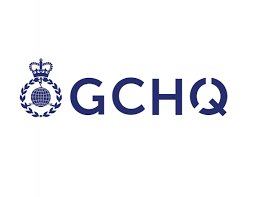
GCHQ Assessment Practice Test
GCHQ, the Government Communications Headquarters of the United Kingdom, is renowned for its commitment to national security and intelligence. If you’re on the path to a career at GCHQ or a similar organization, you’ll likely encounter the GCHQ Assessment Practice Test—a crucial step toward ensuring the highest standards of talent and expertise. In this blog post, we’ll explore the world of GCHQ assessments, providing insights, strategies, and tips to help you excel.
Understanding the GCHQ Assessment Practice Test
The GCHQ Assessment Practice Test is carefully designed to evaluate a wide range of cognitive abilities, problem-solving skills, and critical thinking abilities. These assessments are pivotal in identifying candidates who have the potential to excel in the complex and dynamic world of national security and intelligence. Your performance in these tests can significantly impact your candidacy for a role at GCHQ.
Tips for Excelling in the GCHQ Assessment Practice Test
- Understand the Role: Gain a clear understanding of the role you’re applying for at GCHQ. This will help you align your responses with the specific skills and competencies required for the position.
- Familiarize with the Format: Understand the format of the assessment and the types of questions you’ll face. GCHQ often provides practice materials and sample questions for your preparation.
- Time Management: Manage your time effectively during the test. Allocate specific time limits for each question or section to ensure you complete all parts of the assessment.
- Critical Thinking Skills: Hone your critical thinking skills by regularly practicing critical analysis and problem-solving exercises.
About GCHQ company
GCHQ’s Mission is to keep Britain safe. It brings intelligence and technology together to counter increasingly sophisticated threats. GCHQ intelligence helps keep our forces safe, prevents terrorism and crime, and protects against cyber attacks. GCHQ mostly uses Watson Glaser-style tests for its candidate selection. The sections on the assessments may include any of the following test sections, depending on the role that you applied to and also the country you are applying from:
- Written Exercise
- Case Study
- Situational Judgement Test
- Presentation
- Proof Reading Test
- Personality Test
Key Components of the GCHQ Assessment Practice Test
- Numerical Reasoning: This component evaluates your ability to interpret numerical data, analyze complex information, and make data-driven decisions. Expect questions involving data analysis, percentages, and numerical reasoning.
- Verbal Reasoning: In this section, your language skills, comprehension, and logical reasoning abilities are put to the test. You’ll encounter questions related to reading comprehension, vocabulary, and logical deductions.
- Critical Thinking: The critical thinking section assesses your ability to analyze and evaluate information critically. You’ll need to draw inferences, identify patterns, and make reasoned judgments based on provided data.
- Situational Judgment Test (SJT): The SJT evaluates your decision-making and problem-solving skills in real-world scenarios related to national security and intelligence. You’ll be presented with challenging situations and asked how you would respond, with an emphasis on ethical and practical considerations.
Sample GCHQ Assessment Practice Tests and Worked solutions
GET THE PREMIUM VERSION
GCHQ Graduate Practice pack Verbal Reasoning
In the past 12 months, benefit fraud has fallen by £½ billion to its lowest level for over a decade. The fall is equivalent to a 25 percent drop to 1.5 percent of the total £100 billion benefit bill. This spectacular fall follows permission for the benefits office to access Inland Revenue taxation data. Benefit officers can now immediately check to see if a claimant is working and claiming benefits intended only for those out of work. This new measure has led to over 80,000 people being caught making false claims. A similar initiative has also succeeded in a substantial cut in the level of fraud committed by claimants of housing benefits.
Local authorities are responsible for the administration of this allowance which is awarded to the unemployed and low-paid to help with housing costs. Until recently local authority staff had been unable to access central government records to check the information provided by claimants. These checks have so far identified 44,000 claimants who have provided false information in order to make claims for allowances for which they are not eligible.
Question 1.
By making it possible to share information, over 120,000 cases of fraud have been detected.
A. True
B. False
C. Cannot tell
Question 2.
Ten years ago the level of benefit fraud was higher.
A. True
B. False
C. Cannot tell
Question 3.
Only the unemployed should legitimately claim these benefits.
A. True
B. False
C. Cannot tell
Question 4.
The tone of the passage suggests that these reductions in fraud are a good thing.
A. True
B. False
C. Cannot tell
Question 5.
A year ago the level of benefit fraud totaled £2 billion.
A. True
B. False
C. Cannot tell
Answers
Question 1. A, Explanation: 80,000 by benefit officers and 44,000 by local authorities;
Question 2. B, Explanation: The passage states that the new lower total was the lowest for 10 years so the level must have been lower 10 years ago;
Question 3. B, Explanation: Housing benefit is also awarded to the low-paid;
Question 4. A, Explanation: In the passage, the fall in false claims is described as spectacular;
Question 5. A, Explanation: The passage states that the £½ billion drops is equivalent to 25%, so the level of fraud 12 months previously would have been £2 billion. 50 Ultimate psychometric tests
GCHQ Graduate Practice pack Numerical Reasoning

Question-1
Approximately what percentage of graduates and non-graduates are self-employed?
A. 10%
B. 14%
C. 17%
D. 22%
E. 23%
EXPLANATION Self-employed graduate = 210,000 Self-employed non-graduate = 198,000 and the total = 408,000 Total = 2,100,000 = 900,000 = 3,000,000 Approximate percentage = 408,000/3,000,000 x 100 = 13.6% ≈ 14% Answer: (A)
Question-2
If the number of graduates employed in Health is forecast to decline by 20% year-on-year while the number of non-graduates is forecast to remain the same, how many years will it take for non-graduate employees to outnumber graduate employees in Health?
A. 1
B. 2
C. 3
D. 4
E. 5
EXPLANATION 1st year decline by 20% in health for graduates = 20/100 x 315,000 = 63,000
315,000 – 63,000 = 252, 000
2nd year decline by 20% in health for graduates = 20/100 x 252,000 = 50,400 252,000– 50,400 = 201,600,
3rd year decline by 20% in health for graduate = 20/100 x 2101,600 = 40,320 201,600 – 40,320 = 161280, so if required 3 years. Answer: (C)
Question-3
If the number of graduates employed in Education remains the same while the number of non-graduates increases by 15% per year, how many years will it take for the number of nongraduate to exceed the number of graduates employed in education?
A. 3
B. 4
C. 5
D. 6
E. 7
EXPLANATION 1st year: 15% increase for non-graduate in education 0.15 x 117,000 = 17,550
117,000-17,550 = 134,550
2nd year: 15% increase for non-graduate in education 0.15 x 134,550 = 20,182.5
134,550+20,182.5 = 154,732.5
3rd year: 15% increase for non-graduate in education 0.15 x 154,732.5 = 23, 209.875, 23,209.875+154,732.5 = 177,942.375
4th year: 15% increase for non-graduate in education 0.15 x 177,942.375 = 26,691.35,
26,691.35+177,942.375 = 204,633.73
5th year: 15% increase for non-graduate in education 0.15 x 204,633.73 = 30,695.06
30,695.06+204,633.73 = 235,328.79
6th year: 15% increase for non-graduate in education 0.15 x 235,328.79 = 35299.32,
35299.32+235,328.79 = 280,628.11
7th year: 15% increase for non-graduate in education 0.15 x 270,628.11 = 40,594.22
40,594.22+270,628.11 = 311,222.33 is the year 7th Answer: (E)
Question-4
What is the number of self-employed graduates as a proportion of the total number of individuals in Tarleton district?
A. 3%
B. 4%
C. 5%
D. 6%
E. 7%
EXPLANATION Self-employed graduate = 210,000 Total individual = 210,000 900,000 = 3,000,000 Proportion = 210,000/3,000,000 x 100 = 0.07 x 100 = 7% Answer: (E)

